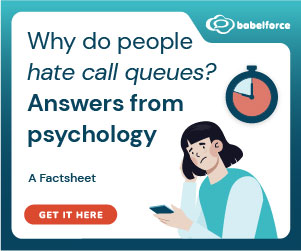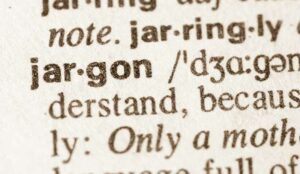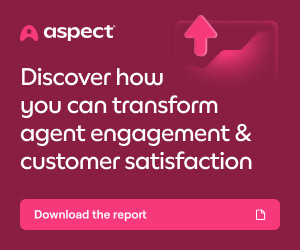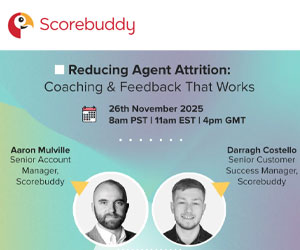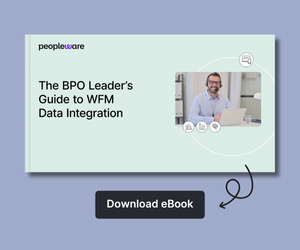When we think about customer service, one of the most important, and common, interactions is a phone call.
Whether it’s to resolve an issue, ask a question, or get support, the experience a customer has on the call can shape their entire perception of a company.
A great call can build trust, loyalty, and satisfaction. On the other hand, a poor call can lead to frustration, negative reviews, or even lost business.
This article explores what makes a phone call with a contact centre truly effective and satisfying – from the customer’s point of view and from the perspective of how call centre agents are trained to deliver great service.
Before reading this section you should write down 5 things that make you feel, as a customer, that you have been on a good call!
If you are either part of a call centre or your organisation has one, then the next time you call, think about whether these are true for the call you have just experienced!
What Are Good Call Experiences?
Here are some typical examples of what customers might say about a great call experience.
These highlight the key qualities that consistently make the difference between a frustrating interaction and a positive, efficient one:
- I wasn’t kept waiting
- The agent was very competent and knew their stuff!
- I was listened to without any interruptions!
- Agent was pleased to talk to me and seemed genuinely keen to help!
- Agent used clear tone and understandable language – no jargon
- My request was completed when they said it would be – no need to call back.
Why Call Centre Calls Are Different
A telephone call to a call centre is different from one you may make or take from a friend or family member.
The call should be much more structured, so that it is handled as efficiently as it can be, but if you break down a typical call, then you will see a series of steps.
Agents will be trained on how to be the most effective in each of these steps and to provide the required company response. It is not always easy, as the question or content may change.
A Good Call Structure in Customer Service
To ensure calls are handled smoothly and consistently, agents follow a structured flow. Each step serves a purpose, both for operational efficiency and for ensuring a positive customer experience.
Here’s a breakdown of each phase and why it matters:
Call Opening
Start the call with a clear and friendly company-branded greeting
The opening of the call is crucial as this often sets the scene for the whole call. The initial greeting is the Company brand, so it should be consistent across all Agents and give the Company identity and voice! As an Agent you will be expected to give this company greeting
Why It Matters
A clear and friendly greeting helps the customer feel welcomed and confident they’ve reached the right place. It immediately establishes professionalism and clarity, which helps set a positive tone for the rest of the call.
Identification
Verify the identity of the customer according to legal and company requirements
Why It Matters
Proper identification protects both the customer and the company. Verifying who the caller is ensures sensitive information is only shared with authorised individuals and helps tailor the service to the correct account or case.
Customer Requirements
Find out why the customer is calling and what they want you to do
Why It Matters
Getting to the heart of the customer’s issue early helps the agent guide the call productively. This saves time and allows the agent to focus on the right solution.
Clarification
Ask clarifying questions to ensure you fully understand the customer’s needs
Why It Matters
Customers may not always express their needs clearly. Asking clarifying questions ensures the agent understands the full context and avoids giving incomplete or incorrect information.
Action/Respond
Respond by taking the necessary action or clearly explain why it can’t be done
Why It Matters
This is the core of the interaction. A prompt and accurate response, or a clear explanation if a request can’t be fulfilled, shows the agent is both capable and honest, which builds trust.
Summarise
Summarise the steps you’ve taken or will take so the customer knows what to expect
Why It Matters
A summary ensures both parties are aligned and gives the customer a clear understanding of what to expect next, and reinforces accountability.
Offer
Ask if there is anything else the customer needs help with
Why It Matters
This shows the agent is proactive and not just trying to end the call. It can uncover additional needs and improve the overall value of the interaction.
Close
End the call politely by thanking the customer and saying goodbye
Why It Matters
A courteous closing leaves a lasting positive impression, and it completes the call on a high note and reinforces that the customer is valued.
Agent Training and Call Effectiveness
In most centres, Agents will be trained on the most commonly asked customer questions. By ensuring an Agent knows the answer to and how to process the information on the computer as efficiently as they can, will ensure that the call duration is the best it can be.
However, what is as critical to an organisation is that the Agent does what they promise to do that is in line with company policy and meets the needs of the customer.
This is the effectiveness of the call. By promising to do something that they are not able to do or to give a discount that the customer is not eligible for, just to complete a call, will not be acceptable to the company and will also lead to unsatisfied customers.
What’s Included in the Best Call Openings
Beyond saying hello, there are some key elements that should be included in the beginning of every customer conversation to get things off to the best possible start – as efficiently as possible.
1. Make It Clear Who You Are and Where You Work
Hello, how can I help you?” is a fairly standard opening line in a contact centre, but are all of your agents introducing the business too?
To remove any chance of confusion, agents should always introduce themselves AND the business as soon as possible.
Example: “Call Centre Helper, you’re speaking to Robyn. How can I help you?” offers far more clarity earlier on than a simple “Hello, how can I help?”
This is particularly pertinent for outbound calls, as asking straightaway to speak to Mr Jones can also be a bit of a faux pas. Whoever has picked up the phone needs to know who they are speaking to first.
The agent could also risk putting the customer on the defensive not knowing who they are speaking to – and getting the call off to a very bad start.
For the best ways to start and end a customer conversation, read our article: The Best Ways to Start and End a Customer Conversation
2. Use a Warm and Friendly Tone
The tone of voice used in the first few seconds sets the emotional tone of the entire call. Even a perfectly worded script can sound cold or robotic if it’s delivered without warmth.
A friendly, calm, and confident tone helps put the customer at ease and establishes a sense of trust from the beginning.
Example: “Good afternoon, this is (NAME) at (COMPANY). How can I assist you today?” (with a warm, upbeat delivery)
3. Acknowledge the Customer by Name if Known
If the caller is a known or returning customer, acknowledging this early in the conversation can make them feel recognised and valued.
If the customer’s name is available via call records or screen pop-ups, use it naturally and respectfully.
Example: “Good morning (Customer Name), thank you for calling (Company). You’re speaking with (Name). How can I help today?”
Even without prior identification, small cues such as “Welcome back” or “It’s nice to speak with you again” (where appropriate) can reinforce a personalised experience.
4. Invite the Customer to Share Their Needs Clearly
Once the introduction is complete, the agent should invite the customer to explain why they’re calling. Framing this as a genuine offer of help shows both attentiveness and readiness.
Example:
- “How can I support you today?”
- “Let me know what you’d like help with and I’ll do my best.”
Combining this approach with an open and friendly tone encourages the customer to speak freely, reduces hesitation, and gives the agent a strong start for diagnosing and resolving the issue efficiently.
Many thanks to Paul Weald for providing this information.
If you are looking for more advice on customer service calls, read these articles next:
- Anatomy of a Good Call – Best practice… The Call
- How to Improve Call Control Skills
- How Do I Calculate… Cost per Call?
Author: Jonty Pearce
Reviewed by: Robyn Coppell
Published On: 29th Nov 2012 - Last modified: 18th Aug 2025
Read more about - Call Centre Management, An Introduction to Contact Centres, Call Handling, Language, Management Strategies, Paul Weald




